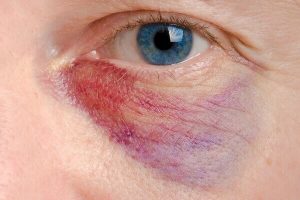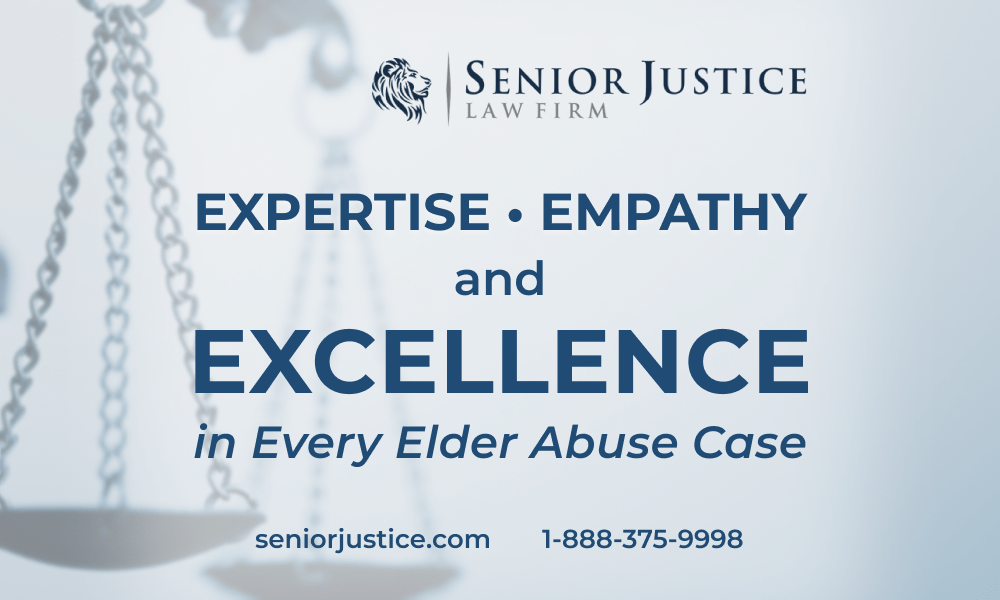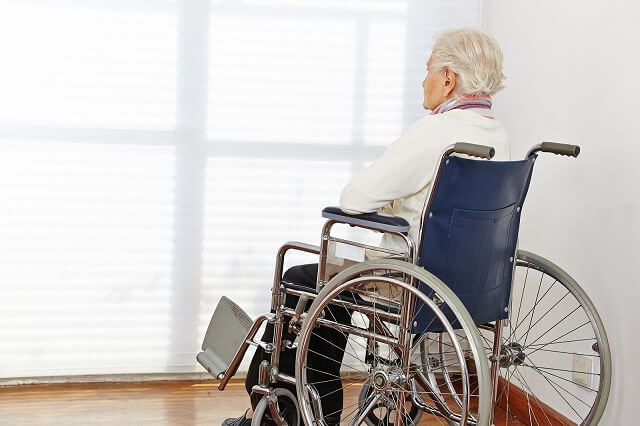Patient-on-Patient Attacks in Nursing Homes

Violence in nursing homes, assisted living facilities, and hospitals is terrifying. The most common form of violence in long term care facilities is patient on patient abuse, also referred to as resident to resident elder mistreatment (RREM). Patient attacks and assaults on other patients are usually preventable through appropriate supervision. Nursing homes, assisted living facilities, and healthcare facilities can be held responsible if they allow a serious resident on resident assault to occur inside their facility.
When most people think of abuse, they think of physical violence such as punching and kicking. While this is certainly one potential outcome of an undesirable interaction between residents, RREM is not limited only to these actions. Many nursing home patients also experience sexual assault and abuse from other residents, as well as mental and emotional harm. All of these outcomes are preventable with adequate care and vigilance from the nursing home, which means that if someone you love has been a victim, you may have a case for legal action.

Speak with a Qualified Nursing Home Assault Attorney to Investigate What Happened
Our lawyers represent patient-victims of fights, assaults, and attacks who were beaten up in nursing homes or assisted living facilities. Our firm’s sole focus is representing victims of elder abuse inside healthcare facilities. This is all that we do. We have helped many families that experienced a loved one being beaten or murdered in a patient on patient assault.
If your loved one was abused or physically beaten up by another nursing home patient, call our nursing home abuse lawyers today for your free patient-on-patient attack lawsuit consultation. If this event is too traumatic to discuss on the phone, use our online case submission tool to get in touch. We understand that this situation can be overwhelming and confusing, and we are here to help.
We work exclusively on contingency fee, which means you pay us nothing unless we win your case. If we do win, we get paid a percentage of the monetary recovery your family receives. This means no out of pocket expense for you.
Receive a free patient-on-patient nursing home attack lawsuit consultation with Senior Justice Law Firm now: 888-375-9998.

Stopping Nursing Home Patient Fights Before They Occur
Stopping Nursing Home Patient Fights Before They Occur
Nursing homes and hospitals house patients with a wide variety of mental health issues.
In fact, 80% of all nursing home residents are cognitively impaired in some way, though the most common diagnoses are dementia and Alzheimer’s disease. Individuals who suffer from these diseases can become combative and may attack other patients, even if they are otherwise quiet people.
Due to their underlying conditions, these residents can become violent and attack other patients.
Legal Requirements to Prevent Patient-on-Patient Assaults and Attacks in Skilled Nursing Facilities
Nursing homes are required by law to screen all incoming residents, as well as train staff in dealing with patients with violent propensities. Part of a nursing home’s responsibilities include making sure that existing residents and new residents co-exist safely. If a resident poses a threat to themselves or others, the situation must be handled before someone gets seriously hurt or killed.
It is the responsibility of the nursing home to evaluate each resident and determine if they pose a risk to others, and to adjust their approach accordingly if such behavior becomes evident at any time. It is not the fault of the resident who was attacked, and the nursing home is not absolved of responsibility simply because it was another resident who abused someone.
A medical malpractice attorney will look for other incidents involving the violent resident. If there is a pattern of violence, the facility may be found negligent if they failed to take action to prevent future attacks. If the facility ignored the warning signs, they may be held responsible for the harm to the abused patient.
Honestly I wasn’t expecting much and I was skeptical going in. The team at Senior Justice proved themselves to be compassionate and respectful as well as holding the facility responsible for their actions. We received a much larger compensation than I had imagined and my brother and I are truly thankful for the folks at Senior Justice.
Michael more than exceeded my expectations and I will always be grateful for what he did to help me during a very trying time in my life.
I highly recommend the Senior Justice Law Firm, if you are searching for a professional team of attorneys who will be looking out for your best interest.
Red flags that nursing homes often look for in order to evaluate whether their patients pose a risk of abuse to other residents include:
- Yelling
- Scratching
- Shoving
- Swearing
- Tantrums
- Punching
- Sexually inappropriate behavior
- Throwing items
- Kicking and biting
If the facility ignored the warning signs, they may be held responsible for the harm to the abused patient.
Nursing Home Liability for Keeping Residents with Violent Propensities
If a nursing home or hospital fails to remove and/or isolate violent patients, patient-on-patient assaults can occur. Resident on resident violence can take many forms, including patient on patients fights, sexual assaults and rape.
If a nursing home cannot care for someone due to their violent tendencies, they are required to send the resident out to a different facility. Intentionally keeping a violent resident so that occupancy remains high is a form of nursing home negligence.
Triggers for Patient Attacks in Demented/Alzheimer’s Patients Residing in Long Term Care Facilities
If a family member has suffered injury or even death at the hands of another resident at their long term care facility, you may wonder why the event happened. Why did the nursing home allow a certain resident to stay, if everyone knew that patient was violent? The fault does not lie with the individual, who may be suffering from Alzheimer’s or another degenerative mental disease—rather, it is the nursing home that is liable for its failure to identify problematic scenarios and actively protect its residents.
If a nursing home allows an aggressive resident to remain in the facility, staff must be vigilant in monitoring that resident and deescalating potential altercations.
Some of the most common encounters that lead to residents lashing out are:
- forced conversation
- delays, lines
- dementia (fear, not knowing what is happening)
- hunger
- pain
- medication changes
- psychiatric illness (anxiety, delusions)
- decreased sleep
- depression
- changes in environment
A nursing home that does not take proper precautions to deescalate and keep safe residents in these situations may be culpable for injuries sustained during resident interactions.
If a Nursing Home Resident becomes Combative, Nursing Home Staff Should:
- Decrease stimuli by removing everyone from the room. Ideally, there should be 1 veteran staff member calming the agitated resident.
- Make intermittent eye contact; do not stare.
- Use facial animation. Raise your eyebrows. Smile.
- Use a calm voice. Do not yell. Do not meet violence with violence.
- If there is time, contact the aggressor’s family member to get a familiar voice on the phone.
- Maintain a distance; do not crowd
- Do not make sudden movements.
- Try not to touch the violent patient. If you are going to touch them, let them know and move your hand slowly towards them.
- Redirect them with positive goals. “Let’s go get a snack.”
- Chart the RREM. Analyze whether this was a first time incident with the attacking resident, or whether it is becoming a pattern of behavior.
- If the threatening behavior is becoming a pattern, a care plan meeting must be held to determine if the facility can keep its other residents safe from attack from this resident. If not, the violent resident should be sent out of the facility.
- Have an outside physician or psychiatric professional examine the resident and determine if they are appropriate to remain in the facility.
- The violent resident should be closely monitored to prevent future assaults. Individuals involved in the altercation should be separated in the future.

Report elder abuse right away. Facilities only keep surveillance video for a limited time. The nursing home neglect attorneys at Senior Justice Law Firm can get answers as to what happened to your loved one.
Patient on Patient Nursing Home Assault: Can I Sue the Facility for These Injuries?

When a family comes to our office seeking legal advice on resident on resident assaults, we are often asked if the nursing home facility can be held responsible. Since it was not nursing home staff, but another resident, who did the physical harm, can the facility still be held liable in a nursing home abuse lawsuit? The answer is yes. A nursing home can be held responsible for one of its residents violent assaults if:
- The nursing home, assisted living facility, or hospital knew, or should have known, that the attacking resident had violent tendencies;
- A violent outburst or assault from the resident was foreseeable, given his/her prior behavior; and/or,
- the nursing home or assisted living failed to reasonably deescalate the altercation; and/or,
- The nursing home or hospital failed to do anything to prevent the foreseeable violent attack.
Common patient attack injuries that result in nursing home litigation are:
- Broken bones and fractures, specifically:
- Fractured hips
- Broken skulls and brain bleeds
- Shattered pelvis
- Broken femur bone
- Broken ankle
- Rape and Sexual Assault
- Wrongful death and murder
More Questions Regarding Your Patient Attack Lawsuit against a Nursing Home?
If you have more questions as to whether your victim’s injury involves a preventable patient-on-patient attack, contact our elder abuse attorneys now for your free consultation at 888-375-9998.
Summary of Your Legal Rights after a Parent is Beaten or Attacked Inside a Healthcare Facility

If someone you know and love has been injured or even killed as a result of the behavior of another resident, you may feel like you have no power to address the situation. It is critical for you to be equipped with knowledge so that you can not only seek the compensation that your family deserves but also force the nursing home or assisted living facility to change its practices. Sadly, real change only comes through legal action in the form of a nursing home assault lawsuit. You can be a force for good, keeping other families safe through the power of exposing the abuse suffered by your loved one.
The law is on your side, and every jurisdiction in America has laws protecting vulnerable long term care residents. As you learn more about how the nursing home or long term care facility has failed its duty to protect your loved one, it is important that you know the following:
- Preventing Foreseeable Patient-on-Patient Assaults and Attacks Is Legally Required
Nursing homes are required by law to stop a foreseeable patient beating. Part of a nursing home’s responsibilities include making sure that existing residents and new residents coexist without harm coming to anyone. If a resident poses a threat to themselves or others, the situation must be handled before someone gets seriously hurt or killed. If a nursing home cannot care for someone due to their violent tendencies, they are required to send the resident out to a different facility.
However, it is important to remember that nursing homes—and especially for-profit institutions—are increasingly focused on boosting the margins on which they operate. This includes cutting staff costs and, importantly, keeping as many beds full as possible. This trend toward maximizing profits over the safety of residents has contributed to an increase in resident-on-resident violence. Unfortunately, nursing homes are loath to transfer a resident and lose access to the payouts received from Medicaid and/or Medicare for that individual. Even if it means keeping a violent, dangerous resident in the facility. It is important to remember that intentionally keeping a violent resident so that occupancy remains high is a form of nursing home negligence, and you can take legal action.
- Nursing Home Staff Should Be Trained to Deescalate and Stop Violent Situations
Because the rates of Alzheimer’s, dementia, and other mental health struggles are so prevalent in nursing homes, staff are expected to be able to deal with these diagnoses competently. A resident’s mental wellbeing is not an excuse for improper action on the part of the nursing home. Staff are required by regulation to intervene in a resident-on-resident assault before someone gets hurt.
There are many detailed steps involved in the process of managing a threatening resident, and the nursing home must continue to monitor and control the situation over time. Failure to follow proper protocols at any point could lead to liability and is one of the first areas that our nursing home abuse attorneys examine when considering whether the nursing home is at fault for your loved one’s injuries.
As mentioned previously, there are many steps involved in keeping residents safe, and failure to correctly implement any of them is the fault of the nursing home. Whether your loved one’s nursing home staff did not deescalate a situation properly, left a known aggressor unsupervised, or any of a variety of potential other situations, you may have legal recourse.
Speak with a nursing home assault attorney today for a free consultation at 888-375-9998.













